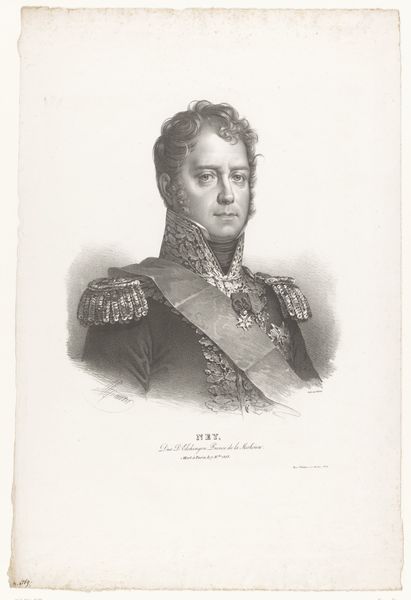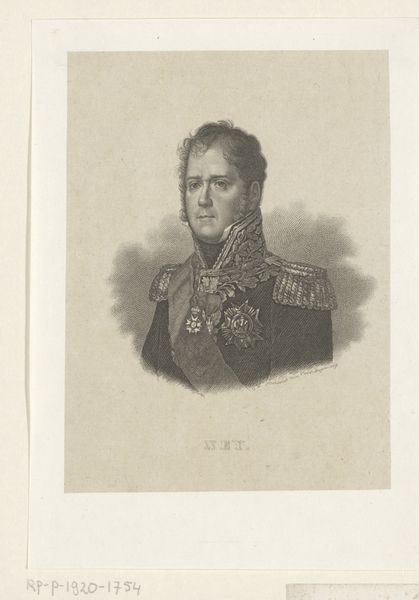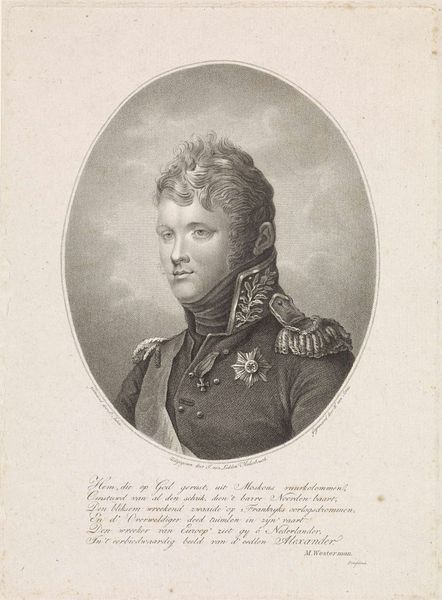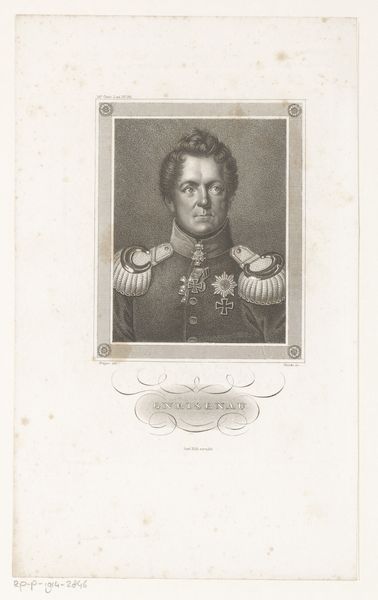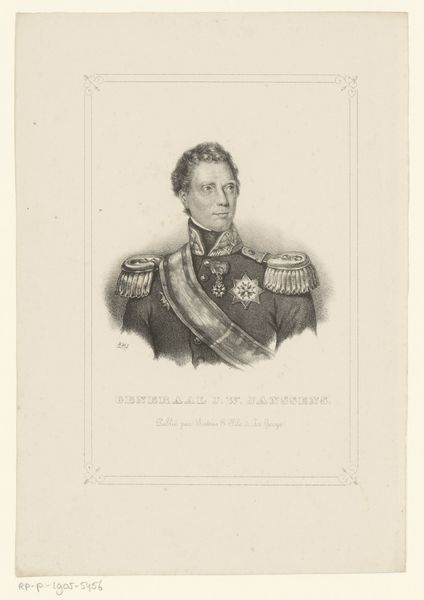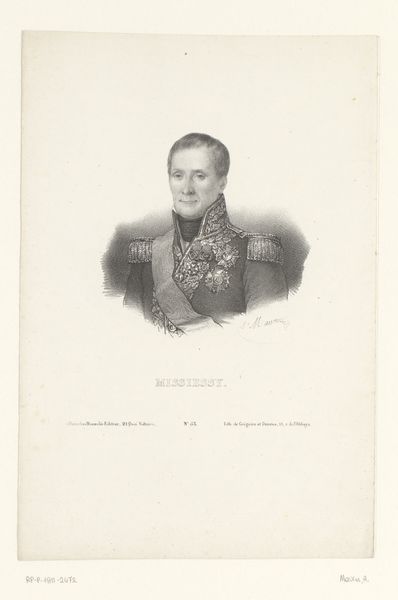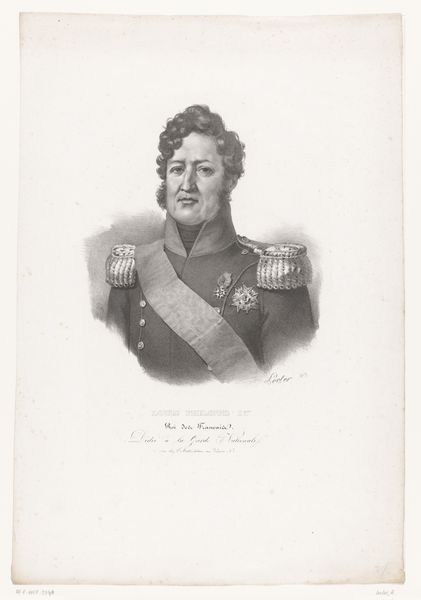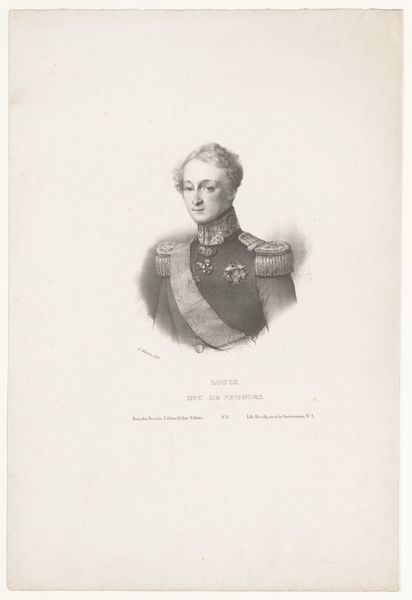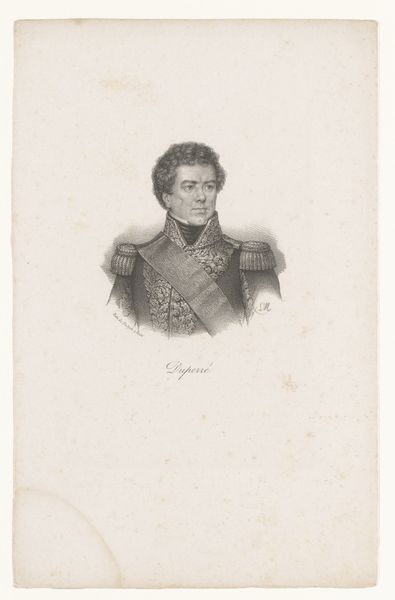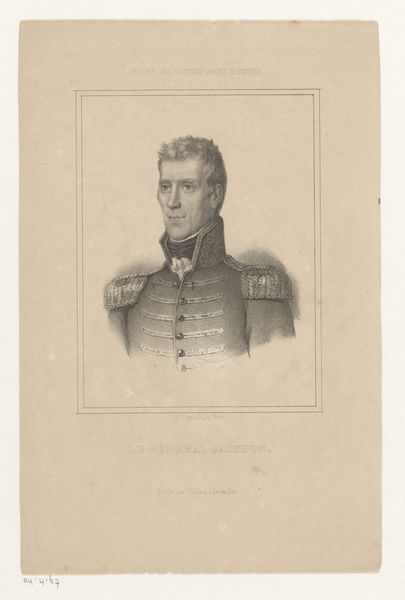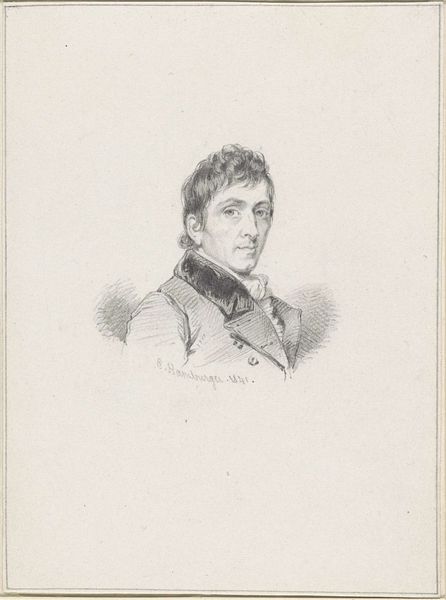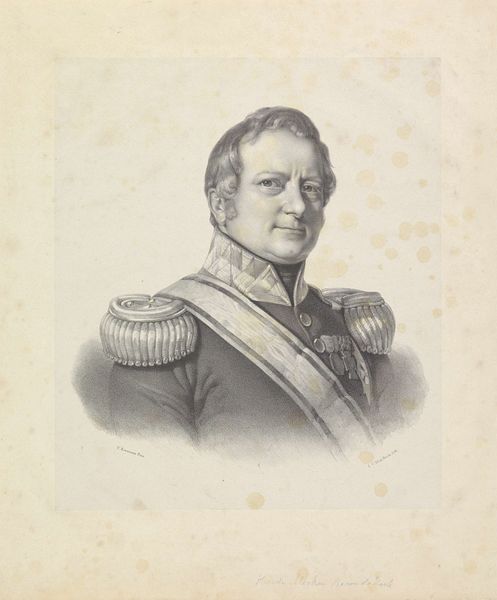
print, engraving
#
portrait
#
neoclacissism
# print
#
old engraving style
#
portrait reference
#
portrait drawing
#
history-painting
#
engraving
#
realism
Dimensions: height 121 mm, width 86 mm
Copyright: Rijks Museum: Open Domain
Curator: Well, hello there. What we have before us is a portrait, “Portret van Michel Ney,” etched into being between 1820 and 1884 by Ferdinand Joubert. It’s an engraving, a kind of historical whisper caught on paper. Editor: It strikes me as terribly formal, yet something in the eyes… a flicker of vulnerability perhaps? The composition itself is meticulously balanced, a clear expression of Neoclassical ideals. The engraving is so intricate, you can almost feel the weight of those medals. Curator: Vulnerability is spot on. Ney was, after all, a pivotal figure during the Napoleonic era. They don’t call him ‘the bravest of the brave’ for nothing. But this isn't just a picture; it's Joubert giving us a glimpse into a human being behind the legend. What elements within this print underscore his historical importance to you? Editor: Look at how Joubert meticulously rendered the uniform—each thread, each embellishment speaking volumes about status and power. Then there's the use of chiaroscuro, that stark contrast between light and shadow, adding depth, drama, and reinforcing a sense of solemnity that suits such a historical subject. A masterclass of Neoclassical formality in monochrome. Curator: Exactly. And that intense gaze… It almost asks: "Am I to be remembered as a hero or something else entirely?" History has a funny way of smudging those lines, doesn't it? Editor: Precisely, this work becomes less about the surface portrayal and more about the psychological landscape underneath— the etching of the man rather than simply a rendition of his outward appearance. Curator: It makes you wonder about the person hiding under all that status. Did he like picnics? Did he trip over his own feet sometimes? Editor: Maybe! But beyond Ney himself, what stands out most is how powerfully an artist from so long ago used line and form. Through rigorous study and execution, the engraving captures an essence, far removed from fleeting social triviality. Curator: Thanks. Every time I see it, I remember there were actual people who lived through it all. Not figures in a book or political pieces in history— but real folks like you or I. Editor: Yes, quite. This piece shows us that behind every hero's stoic portrait lies a complex web of thoughts, conflicts, triumphs, maybe the odd picnic plan, waiting to be uncovered with a new level of formal visual decoding each time.
Comments
No comments
Be the first to comment and join the conversation on the ultimate creative platform.
